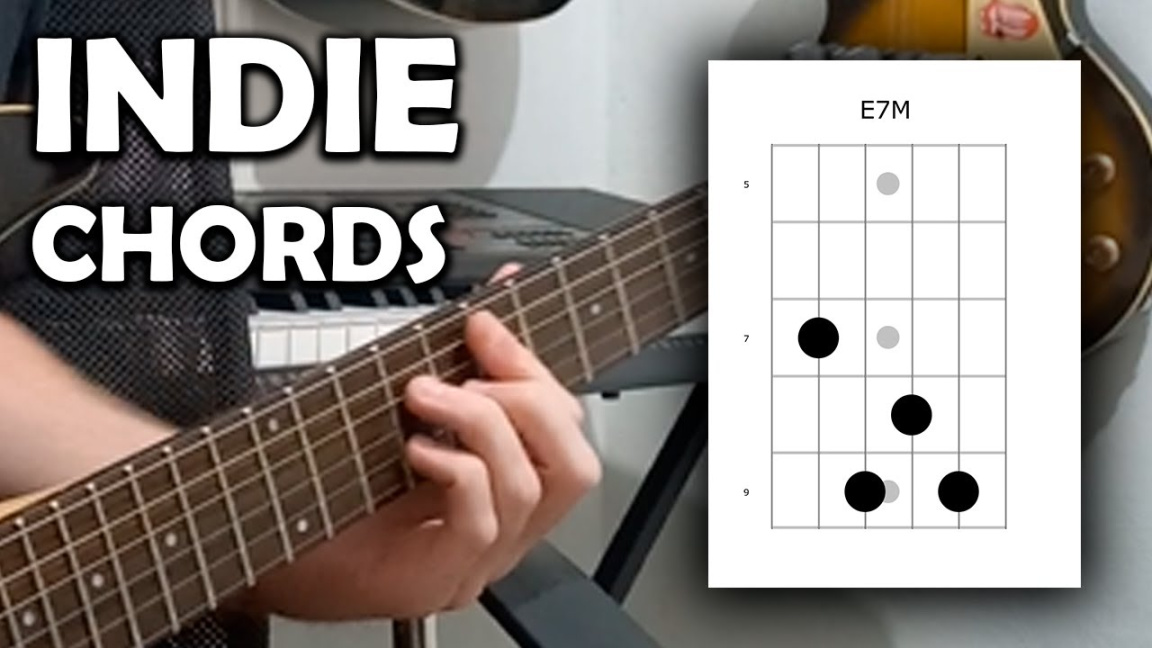Indie Guitar Chord Progressions: Your Guide to That Laid-Back Sound
So, you’re looking to capture that dreamy, slightly melancholic, yet undeniably cool vibe of indie music? A huge part of that sound comes from the chord progressions. Forget the overly polished pop chords; indie music thrives on simplicity, subtle complexity, and a touch of the unexpected. Let’s dive into some of the chord progressions that’ll get you started, and understand why they resonate so well.
Understanding the Indie Aesthetic: Less is Often More
Indie music, at its heart, is about authenticity. It’s about expressing emotions and creating a mood without resorting to flashy techniques or overly complex harmonies. This translates directly to the chord progressions. You’ll often find a focus on simple triads, open chords, and a willingness to explore minor keys. Think of bands like The Smiths, Mac DeMarco, or even early Modest Mouse – their guitar work is often deceptively simple, yet incredibly effective.

Common Indie Chord Progressions: Your Starting Point
The Classic I-V-vi-IV Progression: The Indie Staple
This progression is like the bread and butter of indie songwriting. You’ve heard it a million times, and for good reason. It’s versatile, emotional, and creates a sense of both familiarity and slight melancholy. In the key of C, that’s C-G-Am-F. It’s easy to play, and you can add your own twist with different voicings, arpeggios, or even a simple fingerpicking pattern.
The Minor Key Magic: Em-C-G-D
Minor keys are your friend in indie. This Em-C-G-D progression, often found in the key of E minor, has a wistful, introspective feel. It’s perfect for those late-night, contemplative moments. Again, simplicity is key. Let the chords breathe, and focus on creating a smooth, flowing rhythm.
The Open Chord Dream: G-C-D-Em
Open chords ring out beautifully and create a spacious, airy sound. This G-C-D-Em progression is a classic for a reason. It’s easy to play, and the open chords add a natural resonance that’s perfect for indie. Try experimenting with different strumming patterns and dynamics to create different moods.
The Unexpected Twist: Adding Minor Sevenths and Suspended Chords
To add a touch of sophistication and intrigue, try incorporating minor seventh chords (like Am7 or Em7) or suspended chords (like Asus4 or Dsus4). These chords add a bit of harmonic color and prevent the progression from sounding too predictable. For example, you could take the I-V-vi-IV and change it to I-V-vi7-IV. Suddenly, you have a much more complex and interesting sound.
The Power of Repetition: Building a Mood
Indie music often relies on repetition to create a hypnotic, almost trance-like effect. Don’t be afraid to repeat a simple chord progression for an extended period. This allows the listener to really immerse themselves in the music and connect with the emotions it evokes. Think of the repetitive guitar lines in many of The War on Drugs songs.
The Importance of Dynamics and Texture
It’s not just about the chords themselves; it’s also about how you play them. Varying your dynamics (the volume and intensity of your playing) and adding texture (using different strumming patterns, picking techniques, or effects) can make a huge difference. Try playing the same progression with a soft, gentle strumming pattern, and then try playing it with a more aggressive, driving rhythm. You’ll be surprised at how different it sounds.
Experimenting with Capos and Alternate Tunings
A capo can be a powerful tool for indie guitarists. It allows you to play familiar chord shapes in different keys, creating unique voicings and textures. Alternate tunings, like DADGAD or open D, can also open up a whole new world of sonic possibilities. These tunings often create a more resonant and atmospheric sound, perfect for indie’s introspective vibe.
Focus on the Feel: The Emotional Core
Ultimately, the most important thing is to focus on the feel of the music. Indie is about expressing genuine emotions, so let your playing reflect that. Don’t be afraid to experiment, make mistakes, and find your own unique voice. Listen to your favorite indie bands, analyze their chord progressions, and then try to create your own variations.
Conclusion: Finding Your Indie Groove
Indie guitar chord progressions are all about simplicity, emotional depth, and a touch of the unexpected. By understanding the basic building blocks and experimenting with different techniques, you can create your own unique indie sound. Remember, there are no hard and fast rules. Let your ears be your guide, and don’t be afraid to break the mold. The most important thing is to have fun and express yourself through your music. So grab your guitar, start experimenting, and find your own indie groove.

